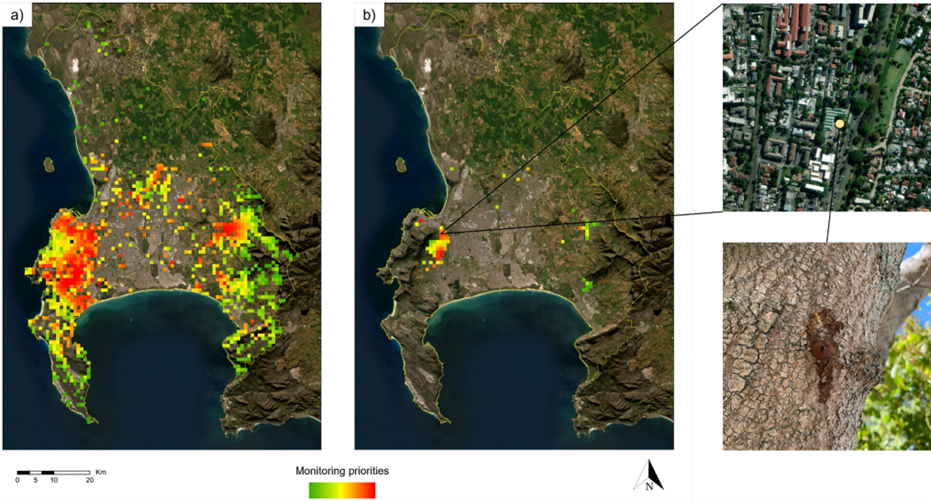What if we told people which aliens they CAN use?
CIB study discusses the use of safe lists in the management of biological invasions.
CIB study discusses the use of safe lists in the management of biological invasions.
CIB study traces the history of the introduction of the genus Quercus into South Africa, as well as its current status and the factors that are changing its distribution across our landscapes.

CIB researchers develop an innovative protocol to map priority areas for detecting new and expanding polyphagous shot hole borer (PSHB) infestations in urban areas.
The Stellenbosch University Centre for Invasion Biology (C·I·B) and the South African National Biodiversity Institute (SANBI) are collaborating to host the National Symposium on Biological Invasions 2023.
The Stellenbosch University Centre for Invasion Biology (C·I·B) and the South African National Biodiversity Institute (SANBI) are collaborating to host the National Symposium on Biological Invasions 2023.